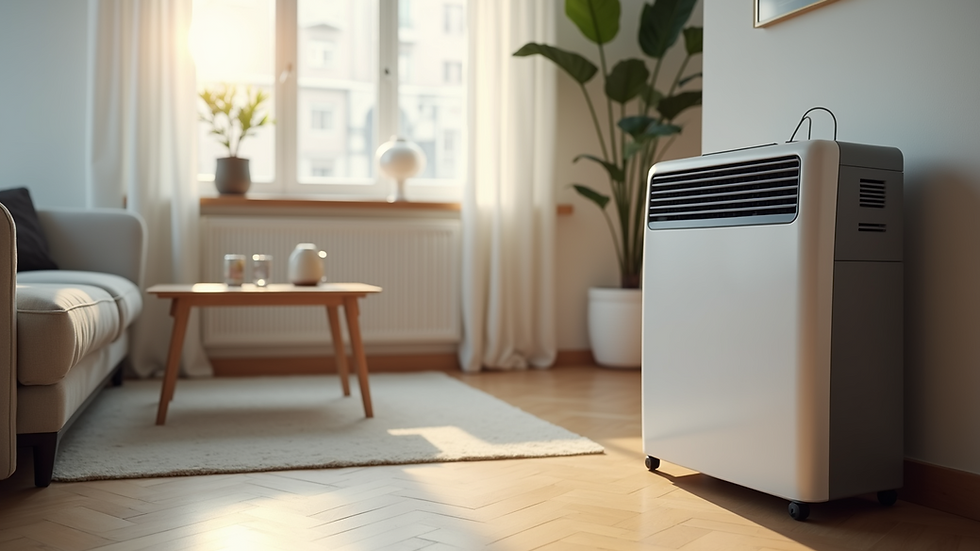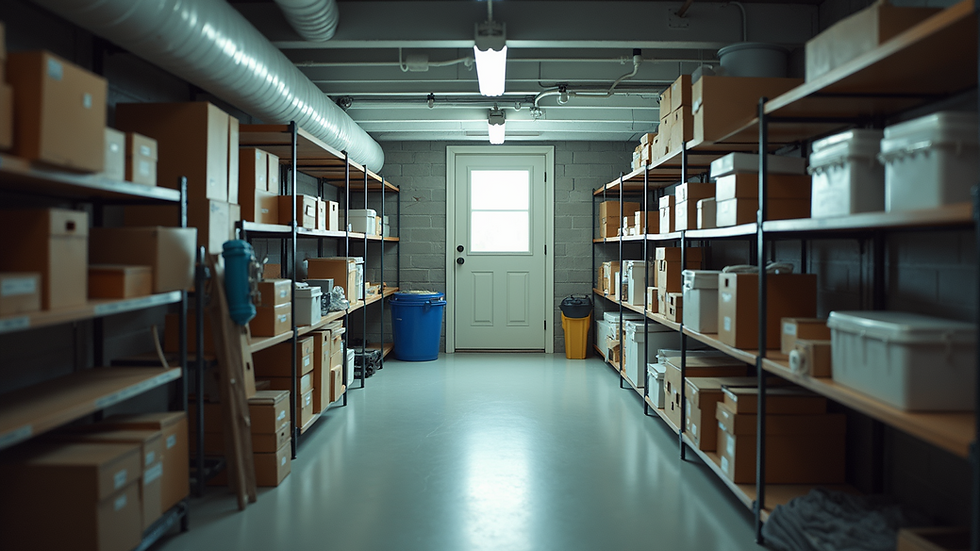Understanding the Impact of Microbial Growth in Homes
- Pre Closing Inspection

- Jul 25
- 4 min read
In many households, the presence of moisture can lead to serious problems, especially in the form of microbial growth. Understanding how and why this growth occurs in our homes can help homeowners take proactive measures to maintain a healthy living environment. Microbial growth is not only an aesthetic issue; it poses severe health risks and can lead to expensive repairs if left unmanaged.
Factors Affecting Mold Growth
Mold thrives in environments that provide the right conditions, particularly moisture, warmth, and organic materials. Several factors contribute to microbial growth, making it crucial for homeowners to identify potential risks in their spaces.
Moisture Levels: Mold needs moisture to grow. Areas with high humidity, such as bathrooms, kitchens, and basements, can be breeding grounds for mold. Even a small leak in plumbing can elevate moisture levels and create a conducive environment for spores. Regularly check areas around sinks, tubs, and appliances to ensure they are dry and well-maintained.
Temperature: Mold thrives in temperatures between 60 and 80 degrees Fahrenheit. Warm areas, coupled with moisture, create a perfect storm for microbial growth. Keeping your home cooler, especially in humid months, can help deter mold. Additionally, ensure proper ventilation in warmer areas, such as by using exhaust fans.
Organic Material: Mold feeds on organic materials such as wood, paper, and textiles. Neglecting to clean areas where these materials are present can promote growth. Regular cleaning and ensuring that organic matter does not accumulate in humid areas are essential preventative measures.
Air Circulation: Poor air circulation can contribute to stagnant moisture and promote mold growth. Ensure proper airflow in your home by using fans and opening windows to allow air to circulate. Keeping interior doors open can also enhance airflow and reduce the likelihood of moisture buildup.

How to Identify Mold Growth in Your Home
Detecting mold early is crucial to preventing extensive damage and health issues. Here are some common signs to watch for:
Visual Signs: Look for patches of mold in hidden areas like under sinks, behind appliances, and in corners of rooms. Mold can appear in various colors, including black, green, and white.
Musty Odors: If you notice a persistent damp smell, it could indicate the presence of mold that is not visible. This odor is typically caused by the release of volatile organic compounds (VOCs) from mold.
Health Issues: Be alert for allergy-like symptoms such as sneezing, coughing, or skin rashes. If these symptoms worsen in specific areas of the house, it could signal an underlying mold problem.
Taking prompt action when you suspect mold growth is essential. If you cannot find the source, consider hiring professionals to conduct a thorough inspection.
What are the 4 Stages of Microbial Growth?
Understanding the lifecycle of mold can also aid in prevention and management. There are four primary stages of microbial growth:
Lag Phase: This is the initial phase where mold contacts a suitable environment. During this period, it prepares for growth but does not increase in number.
Log Phase: In this rapidly growing stage, the number of mold spores increases exponentially. This phase can occur within 24 to 48 hours if conditions remain favorable.
Stationary Phase: The growth rate slows down as resources begin to deplete. Mold may still thrive, but at a stable number. It is essential to act before this phase leads to overall decline, maintaining a healthy environment.
Death Phase: Factors such as a lack of moisture or food sources can trigger this phase. However, spores may still remain and could potentially thrive again if conditions improve.

Preventing Mold Growth in Your Home
Taking preventive measures can significantly reduce your mold risk. Below are actionable recommendations to keep your home mold-free:
Maintain Indoor Humidity: Aim to keep indoor humidity levels below 60 percent. Use dehumidifiers in damp areas, especially during humid seasons.
Improve Ventilation: Use exhaust fans in bathrooms and kitchens. Ensure that your home is well-ventilated to allow fresh air circulation.
Regular Inspections: Periodically inspect your home for leaks, water damage, and mold. Catching problems early can save you time and money in the long run.
Proper Insulation: Insulating your home properly can prevent condensation, particularly in attics and crawl spaces. Insulation materials can also help maintain temperature consistency, inhibiting mold growth.
Cleaning and Maintenance: Regularly clean areas prone to moisture, such as bathrooms and kitchens. Use mold-resistant products when painting or renovating your home.

Strategies for Mold Remediation
If you discover mold in your home, it's important to act quickly:
Identify the Cause: Determine the source of moisture and address it. Repairs might include fixing leaks, enhancing ventilation, or using dehumidifiers.
Contain the Area: Prevent mold spores from spreading by sealing off the affected area with plastic sheeting.
Wear Protective Gear: When cleaning mold, wear gloves, goggles, and a mask to protect yourself from spores.
Clean Thoroughly: For small infestations, use a solution of water and detergent to scrub the mold off hard surfaces. Avoid using bleach, as it might not fully eliminate mold spores.
Dispose of Contaminated Items: Remove and discard items that cannot be cleaned, such as carpets or upholstery that have been severely affected.
Consider Professional Help: For extensive mold growth, it may be best to hire a professional. Experts possess the tools and knowledge needed for thorough removal and remediation.
Maintaining a home free from microbial growth is an essential part of ensuring a healthy living environment. Taking steps to reduce moisture, improve ventilation, and keep a close eye on signs of mold can save you countless problems down the line. If you want to learn more about assessing risks or if you have been affected by microbial growth, visit this resource.
By being proactive and informed, homeowners can create a space that is safe, comfortable, and free from the worries of mold. Maintaining a clean home will not only protect your family’s health but will also extend the lifespan of your property's materials and systems.




Comments